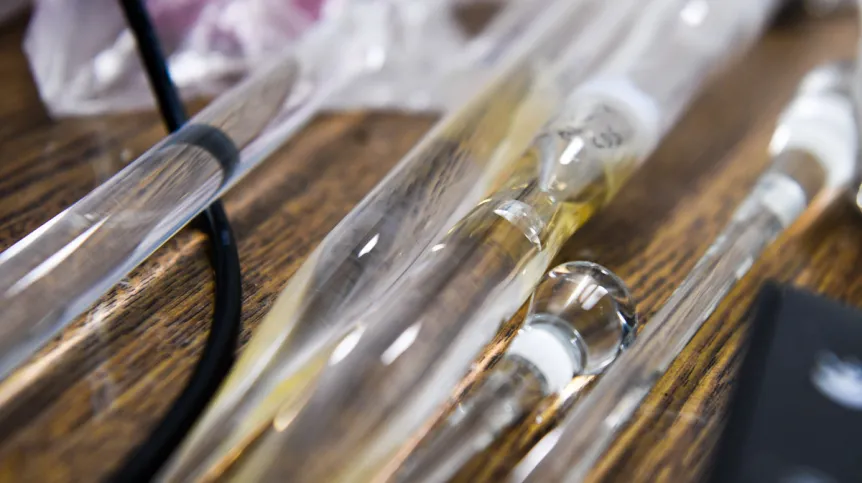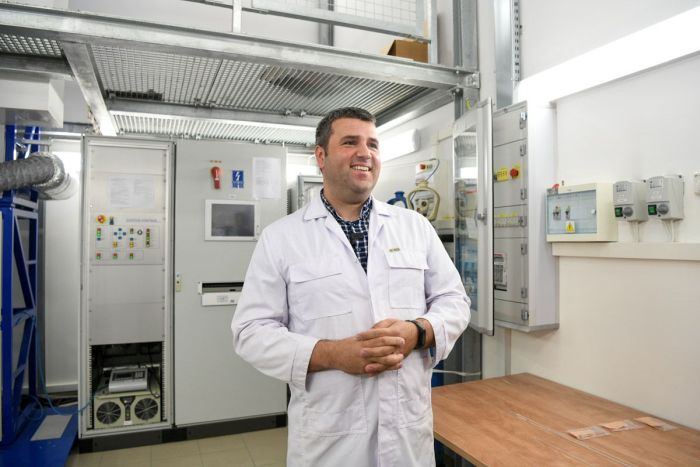
Scientists from three Polish universities have patented glass that will enable the construction of fibre lasers for tissue cutting. Efficient infrared emission causes coagulation, which means less blood during procedures.
The holders of the patent for oxide-fluoride titanium germanate glasses with luminescent properties in the mid-infrared range and a method for obtaining them are the Białystok University of Technology, the University of Silesia in Katowice and the AGH University of Science and Technology in Krakow.
“We have a patent for the glass which can be used to produce optical fibres for fibre lasers cutting human tissue. The infrared radiation used for this purpose causes coagulation, which means that less blood will be shed,” says Dr Marcin Kochanowicz, co-creator of the invention.

He explains that the glasses are doped with lanthanide ions with spectroscopic properties, applicable in the construction of fibre optic radiation sources, i.e. fibre lasers. The parameters of these glasses allow to obtain efficient emission in the mid-infrared range, i.e. 2.70 micrometers - 3 micrometers. This range is of particular importance when it comes to medicine and optical sensors.
“These optical fibres may be used to produce fibre lasers excellent for cutting human tissue wherever immediate coagulation is possible, and thus resulting in high precision,” he says.
The patented glass can also be used to study gas contamination. “Every gas has certain absorption bands and where the emission of our glass overlaps - because these are active glasses, which are characterised by radiation emission - we can superimpose it on the gas absorption and in this way construct sensors that can detect gases polluting the atmosphere, such as ammonia - this is the spectral range,” adds Kochanowicz.
Optical fibre is an optical structure that propagates radiation by total internal reflection. It is not a tube, although there are also capillary optical fibres. Even a glass rod can be a simple optical fibre over a short distance.
The researchers had to predict which dopants could make the glass useful for infrared radiation emission in the assumed wavelength. Titanium oxide - one of the main dopants - is available without problems. Work was carried out in anaerobic chambers. The scientists studied optical, thermal and structural properties of many compositions and selected the optimum glass in terms of optical and thermal properties, which allow it to be processed into optical fibres. The Białystok University of Technology was responsible for the fibre optic part, the AGH University of Science and Technology for the structural properties, and chemists from the University of Silesia for manufacturing and optical measurements.
The creators of the invention are Professor Wojciech Pisarski from the Institute of Chemistry of University of Silesia, Professor Joanna Agnieszka Pisarska, from the Faculty of Science and Technology of University of Silesia, Dr. Marcin Kochanowicz and Professor Dominik Jacek Dorosz from the Faculty of Materials Science and Ceramics of the AGH University of Science in Kraków.
PAP - Science in Poland
kol/ agt/ kap/
tr. RL













